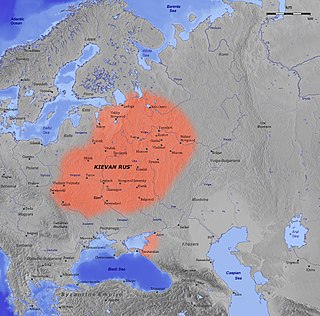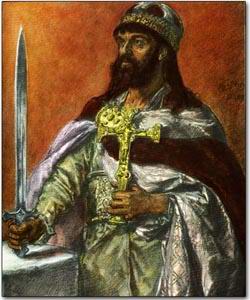Related Research Articles
The 860s decade ran from January 1, 860, to December 31, 869.
The 870s decade ran from January 1, 870, to December 31, 879.
The 880s decade ran from January 1, 880, to December 31, 889.
The 930s decade ran from January 1, 930, to December 31, 939.
The 940s decade ran from January 1, 940, to December 31, 949.
The 950s decade ran from January 1, 950, to December 31, 959.
The 960s decade ran from January 1, 960, to December 31, 969.
The 970s decade ran from January 1, 970, to December 31, 979.
The 980s decade ran from January 1, 980, to December 31, 989.
The 990s decade ran from January 1, 990, to December 31, 999.

Year 935 (CMXXXV) was a common year starting on Thursday of the Julian calendar.

Year 866 (DCCCLXVI) was a common year starting on Tuesday of the Julian calendar.

Year 961 (CMLXI) was a common year starting on Tuesday of the Julian calendar.

Year 968 (CMLXVIII) was a leap year starting on Wednesday of the Julian calendar.

Year 989 (CMLXXXIX) was a common year starting on Tuesday of the Julian calendar.

Year 988 (CMLXXXVIII) was a leap year starting on Sunday of the Julian calendar.

Year 960 (CMLX) was a leap year starting on Sunday of the Julian calendar. It was the 960th year of the Common Era (CE) and Anno Domini (AD) designations, the 960th year of the 1st millennium, the 60th year of the 10th century, and the first year of the 960s decade.

Year 978 (CMLXXVIII) was a common year starting on Tuesday of the Julian calendar.

Year 970 (CMLXX) was a common year starting on Saturday of the Julian calendar, the 970th year of the Common Era (CE) and Anno Domini designations, the 970th year of the 1st millennium, the 70th year of the 10th century, and the 1st year of the 970s decade.
The 1020s was a decade of the Julian Calendar which began on January 1, 1020, and ended on December 31, 1029.
References
- ↑ Raffaele D'Amato (2010). Osprey: MAA - 459: The Varangian Guard 988–1453, p. 6. ISBN 978-1-84908-179-5.
- ↑ Picard, Christophe (2000). Le Portugal musulman (VIIIe-XIIIe siècle). L'Occident d'al-Andalus sous domination islamique. Paris: Maisonneuve & Larose. p. 109. ISBN 2-7068-1398-9.
- ↑ Robert Fawtier, The Capetian Kings of France, transl. Lionel Butler and R.J. Adam, (Macmillan, 1989), p.48.
- ↑ France, John (1991). "The occasion of the coming of the Normans to southern Italy". Journal of Medieval History. 17 (1): 183–203. doi:10.1016/0304-4181(91)90033-H.
- ↑ Gilbert Meynier (2010). L'Algérie cœur du Maghreb classique. De l'ouverture islamo-arabe au repli (658-1518). Paris: La Découverte; p. 45.
- ↑ Bacharach, Jere L. (2006). Islamic History Through Coins: An Analysis and Catalogue of Tenth-century Ikhshidid Coinage. Cairo: American University in Cairo. pp. 60–61. ISBN 9774249305.
- ↑ Detlev Schwennicke, Europäische Stammtafeln: Stammtafeln zur Geschichte der Europäischen Staaten, Neue Folge, Band III Teilband 1 (Marburg, Germany: J. A. Stargardt, 1984), Tafel 49